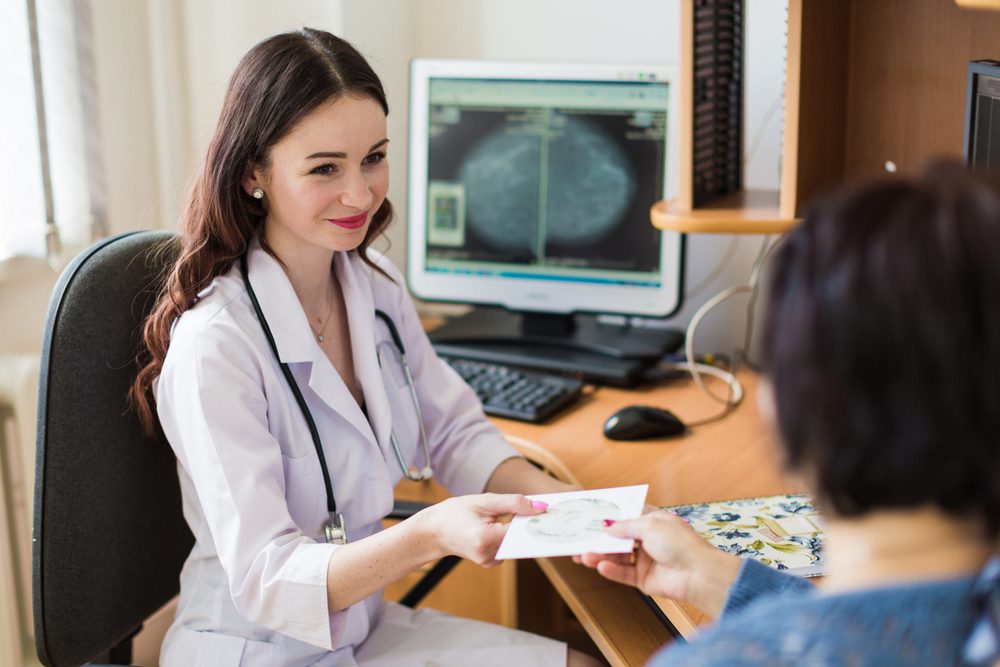Getting your first mammogram can be daunting. From not understanding the process to being worried about understanding the results of a mammogram screening, there is a lot that goes into mammography appointments.
Read on to learn everything you need to know, from how to prepare to what to expect.
What is a Mammogram?
A mammogram is an x-ray that creates images of your breast to detect any abnormalities that could indicate breast disease. Mammography is typically done with digital breast tomosynthesis, where 2D images are taken of the breasts and then combined by special software to make them 3D. Mammograms are highly essential for breast cancer screenings.
What Happens During a Mammogram?
First, you’ll arrive and complete any paperwork that is needed for your appointment. This paperwork might involve your medical history and your family’s medical history. Other things that need to be disclosed are if you are breastfeeding, pregnant, have breast implants, or have noticed any recent changes in your breasts.
Once it is time for your mammogram, you’ll be asked to undress from the waist up and will be given a gown to wear. Then, you will position each breast on a plate of the mammography machine. The technologist will then lower the compression paddle to compress your breasts so the X-ray image can be properly captured. The actual time your breasts will be in the mammogram machine is around one minute, and the x-ray image takes about 10 to 15 seconds per breast.
What does a mammogram show?
A mammogram shows a black, gray, and white image of your breasts. The coloring depends on the denseness of the tissue. The denser the tissue is, the lighter the color of the X-ray—that’s why bone shows up as white. Fat is dark gray on an x-ray.
Mammograms are designed to show abnormalities, like breast cancer and benign conditions, visually by highlighting them in a lighter shade of gray or white.
How to Prepare For a Mammogram
You don’t need to do anything in particular to prepare for a mammogram, since it is not an invasive procedure. Just be sure to wear loose clothing so you can comfortably change out of it, and avoid wearing a dress since you’ll be asked to undress from the waist up. If you have previous mammogram results, bring those as well.
How long does a mammogram screening take?
You will probably be in the doctor’s office or clinic anywhere from 30 minutes to an hour, depending on how long you’ll have to wait, but the actual time it takes for a mammogram is less than five minutes. Each breast is x-rayed at about 10 to 15 seconds, so the total time you’ll be on the mammogram plate is less than five minutes.
Is a mammogram screening painful?
Mammogram screenings usually aren’t painful, although they can be a little uncomfortable due to the compression that happens during mammograms. However, this compression is necessary for a more accurate image of the breasts.
This compression also helps decrease radiation to other parts of the body, prevent movement and blurriness, and helps distribute a uniform thickness to all breast tissue.
Another way to help minimize discomfort or pain during a mammogram is to schedule it when you are least likely to experience pain. Avoid scheduling the appointment during the week leading up to your period, as that is typically when breasts are more tender and sensitive. Limit any salt and caffeine intake, since that could also impact tenderness of the breast. Taking an ibuprofen or acetaminophen might also help alleviate any pain.

Findings on a Mammogram
Mammograms show the density of breasts. The more dense a breast is, the higher the likelihood they have of getting breast cancer. Findings also show any abnormalities, like:
- Calcifications
- Masses
- Asymmetries
- Distortions
Are Mammograms Safe?
Although mammograms expose breasts to a small amount of radiation, they are relatively safe. To put it into context, an average person is exposed to about 3 millisieverts of radiation each year just because of their surroundings. During a mammogram, you are exposed to about 0.4 millisieverts for each breast. Additionally, the benefits of getting a mammogram often outweigh any harm from radiation exposure.
Mammogram FAQs
What is a 3D mammogram?
Three-dimensional mammograms use computer software combined with x-ray imaging to combine pictures of your breasts during the mammogram that then results in a 3D image. 3D mammograms help doctors see the tissue and lower the chances of being called back to the office to get more tests after a mammogram screening. Overall, studies show that 3D mammograms are more effective in highlighting any abnormalities in breast tissues.
What happens during a mammogram if I have breast implants?
If you have breast implants, you’ll need a lengthier mammogram process. This is because women with breast implants will need four x-rays of each breast, as compared to the standard one image. Four images are necessary to truly give your radiologist a full view of your breasts.
If you have breast implants and are getting a mammogram, make sure you let your radiologist know ahead of time.
What should I expect after a mammogram screening?
Immediately after a mammogram, you can resume all daily activities normally. In the days and weeks following a mammogram, you may be contacted by your doctor’s office with any results and findings of the mammogram screening.

